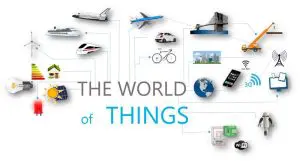These days content is king, and visual content reigns above all. Visual content pieces such as infographics are trending in popularity across all media platforms. Why is that? Why are data visualization pieces so dominant? What are the marketing and societal trends that have fueled this content fire?

(GREGOR/Pixabay)
What is Data Visualization?
Data visualization content pieces often take complicated data sets and present them in an easier-to-digest, understandable visual format. An infographic is an excellent example of a data visualization piece.
It may come as no surprise to those who struggled in math class that human brains are not, in fact, wired for understanding raw numbers but instead for taking in visual messaging. Humans are wired for storytelling. In our modern world, where we are bombarded daily with data and information, visualization is often the key to getting messages across to an audience looking for stories.
Trends to Support Data Storytelling
The Move Beyond Text
As technology advances, so do content and marketing trends. In the earlier days of digital media, text was often all that was available. Regarding complex data sets, marketers could manually extract findings and put them into analytic reports.
Technology has and continues to advance, however. While we currently have the ability to create interesting and engaging visual pieces such as videos and infographics, the future will include many more applications utilizing interactive content, predictive data sets, automatic visualization creation to make data storytelling so much easier, and AI searches in a visual format.
Information Saturation
The saturation of data we see in the world today is only growing, and exponentially so. Data is multiplying so quickly that we do not currently have the ability to harness or control it. Being able to pull up data on any question or problem we have, however, does allow for mountains of insight.
The field of data storytelling grows with the growth of information. Visualization is a way of making sense of all of the data and numbers that bombard us daily. As society becomes more complex, methods of packaging and comprehending information become more important. Visualization is one way to cut through the noise.
Falling Media Trust
On any side of the political scale, you’ll find distrust in the media rising. Today, in addition to traditional media sources, we now have overwhelming amounts of information coming out of social media sites. These sites only add to a persistent feeling of skepticism and suspicion.
This makes providing easily accessible and understood data sets even more important. Rather than accepting information heard or read in the news, people are doing their own research into subjects that interest them. The general public is more likely to absorb information presented using visual storytelling than in a textual report.
Data Democratization
Data is no longer simply a tool for scientists, researchers, economists, and business owners. Data is everywhere and consumed by the masses.
People have a need to know. When a topic comes up while you’re watching tv or having a discussion at the bar, it is easier now than ever to pick up a phone, search for your quarry, and immediately be presented with data to support you. When it comes to the quickest understanding of data in question, visual representations such as infographics tend to be preferred. Rather than reading through articles and reports, visual storytelling allows for the passing of information at a glance.
This democratization also has a lot of implications in the workplace. Expert knowledge used to be a gatekeeper for information. Only those who held professional credentials in analysis or data science were able to present data. Now tasks such as the creation of data visualization pieces are able to be accomplished by a wider pool of people. There are even free tools available online to make it even easier.
Enter Infographics
One effective form of data visualization is the infographic. If you want an audience to retain data or information, visual storytelling with an infographic may be your best bet. Infographics summarize data in an engaging way.
Infographics utilize data visualization by way of charts, graphs, and diagrams. In an effective infographic, information will be presented in a story structure. The reader will follow the data, analysis, and conclusion quickly with the use of visual aids and imagery.
Our brains are able to process visual information thousands of times faster than in understanding text. In that way, the technology that now allows for data visualization and analysis seems to only be catching up to a natural conclusion.
Further technological advancements will assist us in harnessing the abundance of data that continues to rise, and the applications of visualization will only improve. Data storytelling gives us better ways of communicating insight. This is the difference between creating a graph or chart and highlighting what the relevant data means and why it is important.
